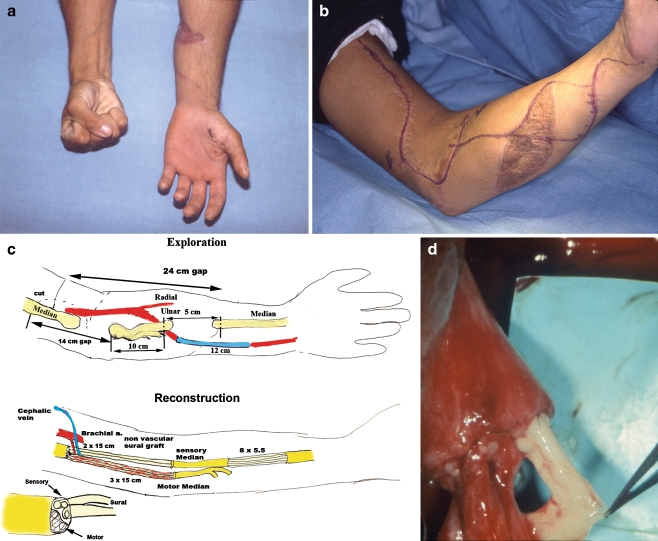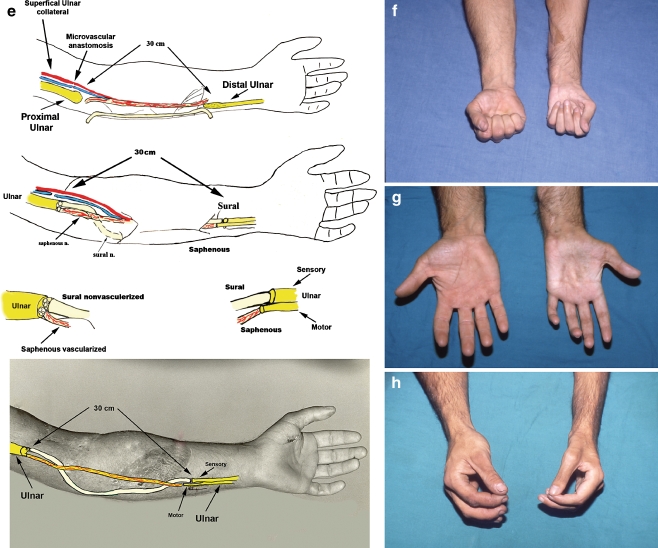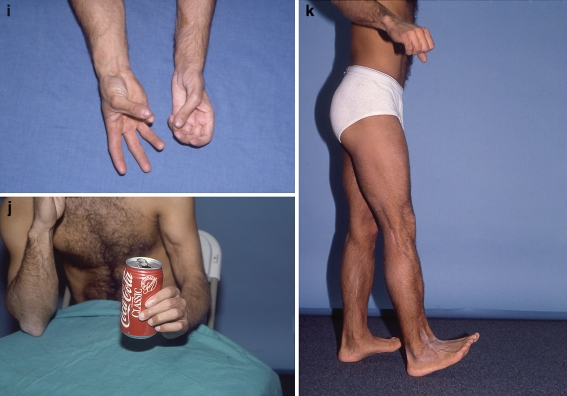Figure 2.
This is a 23-year-old male who was involved in a boating accident in which the propeller of a motor boat ran over his left arm. He was taken emergently to a local hospital where he was noted to have severe neurovascular injuries as well as tissue loss of the left forearm. He received elsewhere emergency revascularization of his left extremity with the use of saphenous vein grafts. He had also multiple levels of nerve injuries of the left ulnar and median nerve. Preoperative view of the patient (a, b); 3 months later, he underwent reconstruction of his left median nerve which was transected at four levels (cabove). The sensory part of the superficial and deep peroneal nerves based on their common vascular supply was harvested and used to reconstruct the motor portion of the median nerve (3 × 15 cm, one deep and two superficial peroneal cables). Nonvascularized sural nerve grafts were used to reconstruct the sensory portion of the median nerve (2 cables × 15 cm proximally and 8 cables × 5.5 cm distally; cbelow). Close-up of the proximal coaptation; vascularized nerve grafts on the left, nonvascularized sural nerve grafts on the right (d). Seven months after the injury he underwent reconstruction of the left ulnar nerve utilizing vascularized saphenous nerve graft (1 cable × 30 cm) for the motor portion of the ulnar nerve and sural nerve graft for the sensory component of the ulnar nerve (e). Four years postoperatively, we can see very good results. Powerful finger flexion, thumb opposition, and intrinsic function (f, g, h, i). He can easily pick a can of coke (j) and has never had any morbidity in the donor lower extremity (k).



